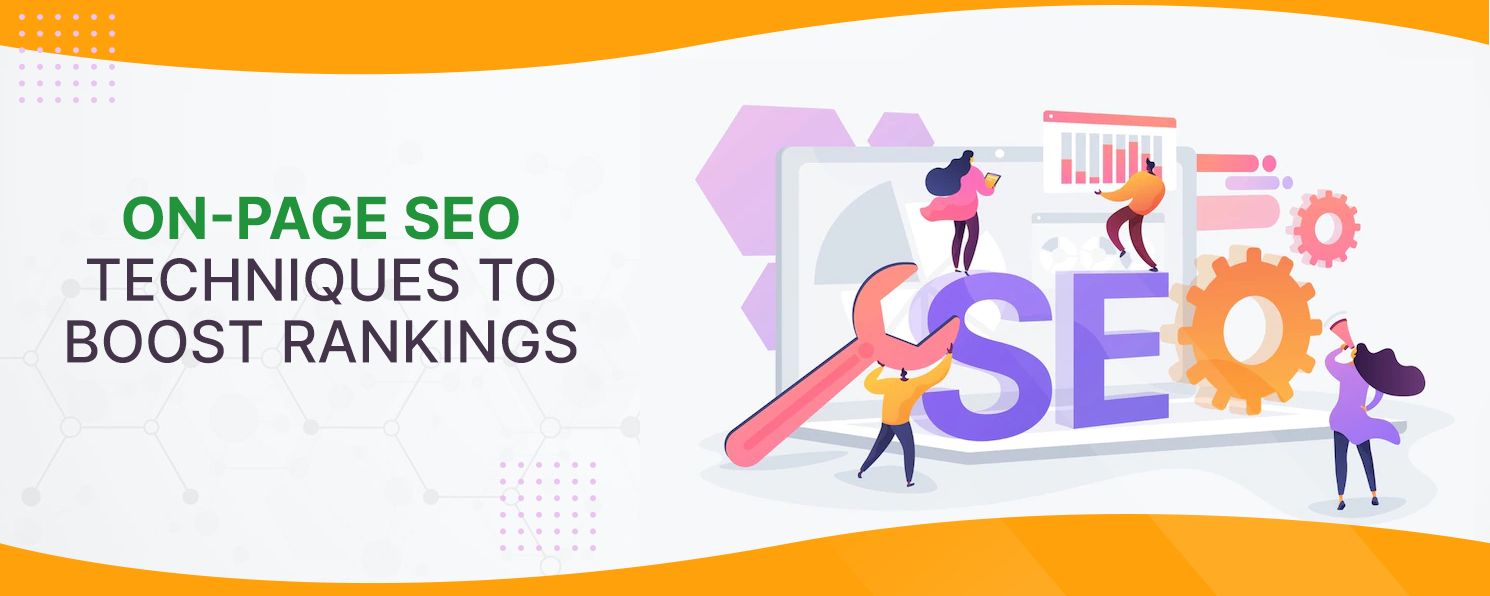
Do you know that 95% of search engine traffic goes only on the first page of search results? If you want people to come to your business in search results, then you need to optimize the pages of your website. On-Page SEO techniques help you get more qualified leads and people will land on your website.
By optimizing your web page, Google will understand that you deserve a place on the first page in the search engine result page.
On-Page SEO is a process of optimizing different pages of your website so that it can rank higher on search engines. On-page SEO comes under SEO Services and has different elements such as schema markup, meta tags, links, and many more.
The primary function of On-Page SEO is to optimize the structure and content of a web page. Various Digital Marketing Agencies perform On-Page activities and help clients to rank on top of the web page.
Now we have understood what On-Page SEO is, let’s check out the On-Page SEO techniques that will boost rankings.
If you want to rank high on search engines, you need to incorporate relevant keywords into your web pages. Keywords will trigger your site to appear in the right search results. You can use different keyword research tools to conduct keyword research. While conducting research, you should also focus on long-tail keywords that contain three or more words.
For example – “best school in India”. It helps to drive more qualified traffic to your site. Don’t use keywords too often in your pages as it will count as keyword stuffing and as a result, it will also hurt your ranking.
Content marketing is a major fundamental part of SEO because it develops an interest in people so that they will visit your website more often. Optimizing your content will enable you to rank in search results and more people will discover your business through your website’s content.
Always try to make your content user-friendly for your audience. Search engines understand how a user is interacting with your content and as a result, it increases the ranking of your site. You can do this by using headings, bulleted points, adding visuals, and using readable language.
The title tag appears in blue color search results. People click on this and navigate to the page of your site. It determines the relevancy of the search query. Your description is a small piece of information that appears below the title tag. It provides a summary to the audience about your web page.
The meta description doesn’t impact rankings but it guides people to choose what they are searching for. Your title tag and meta description should always be in detail so that people are more likely to click on them.
A title tag should be of 60-character limit along with your keywords. A meta description should be of 155-character limit along with keywords.
Visuals are a vital component in providing a positive user experience on your site. It helps to enhance the quality of your page and brings more engagement to your site. Therefore, your images should always be properly sized and optimized from an SEO point of view.
Use image compression tools to compress the size of images. Since Google cannot read images, it is always advisable to use alt tags for your image by which search engines can easily identify your images.
Internal links are the links of your web pages by which a user can easily navigate from one page to another page of your site. It helps a user to discover new pages on your site and thus helps in indexing and ranking. It also helps the user to stay on your website for a longer period of time. Always ensure to create a relevant anchor text for generating internal links on your site.
Search engines use URLs to determine the relevancy of your web pages. Always create a relevant and clear URL for your page for both users and search engines to rank your website.
Don’t use numbers or letters in the URL as a user will not be sure about the content of your page but try to provide a context in that URL.
For example – www.baker.com/cakes/chocolates/recipes. By looking towards the URL, it is clear to a user what to expect from this website.
It is a part of SEO Services. People generally access different websites from their mobile devices or tablets. If your website is not mobile optimized, then you will deliver a poor user experience.
Your website will also be ranked as Google first considers the mobile version of your site while ranking in search results. Thus, always choose a responsive design i.e. for both mobile and laptop versions.
Users expect your site to open in three or fewer seconds. Your audience will bounce back from your site if it has a high loading time. Thus, always check for the best SEO tools to reduce the loading time of your site.
After checking all these elements, you must have now got a big to-do list to be checked and implemented on your site. Clap Creative is one of the best digital marketing agencies that will help you to optimize your site completely to drive great results.